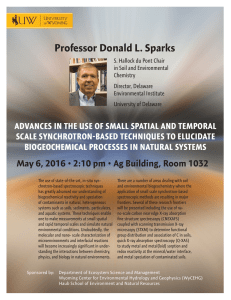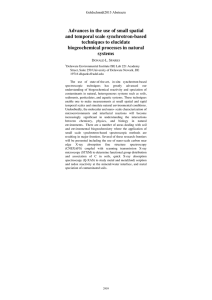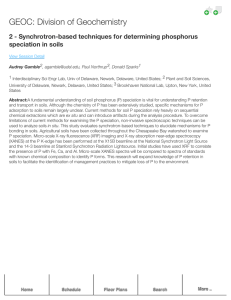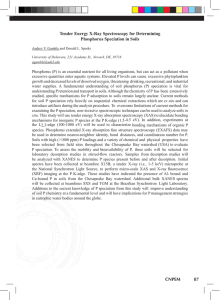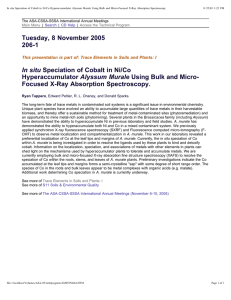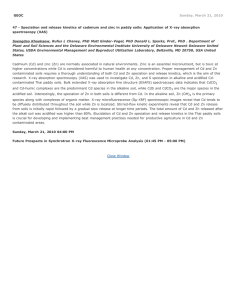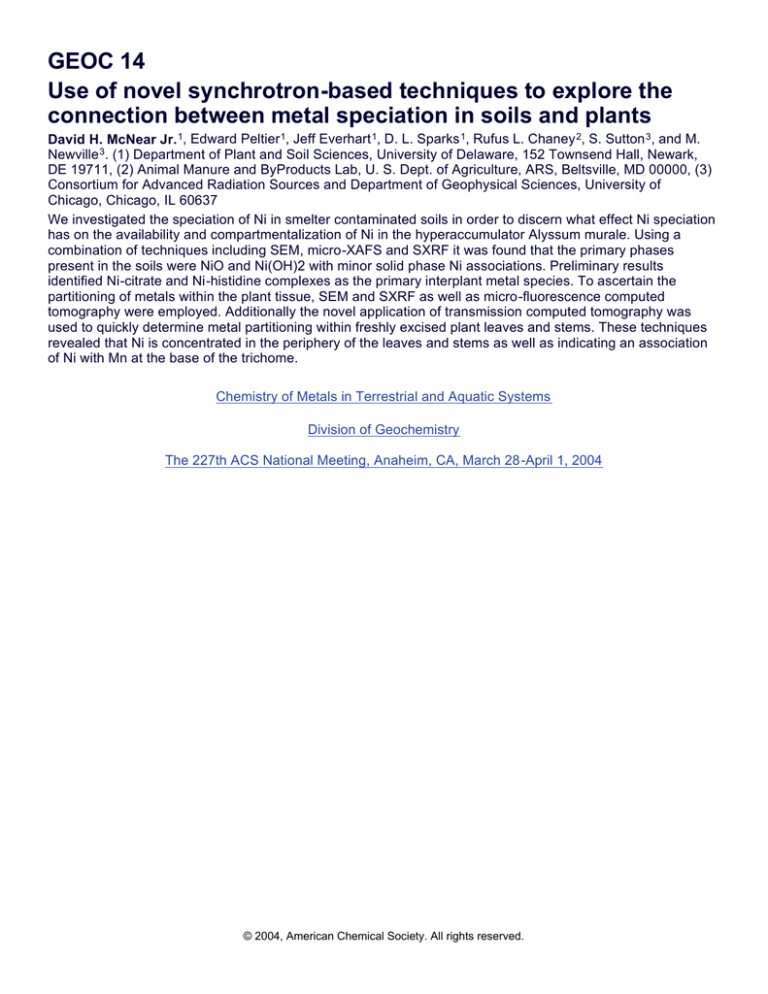
GEOC 14
Use of novel synchrotron-based techniques to explore the
connection between metal speciation in soils and plants
David H. McNear Jr. 1, Edward Peltier 1, Jeff Everhart 1, D. L. Sparks 1, Rufus L. Chaney 2, S. Sutton 3, and M.
Newville 3. (1) Department of Plant and Soil Sciences, University of Delaware, 152 Townsend Hall, Newark,
DE 19711, (2) Animal Manure and ByProducts Lab, U. S. Dept. of Agriculture, ARS, Beltsville, MD 00000, (3)
Consortium for Advanced Radiation Sources and Department of Geophysical Sciences, University of
Chicago, Chicago, IL 60637
We investigated the speciation of Ni in smelter contaminated soils in order to discern what effect Ni speciation
has on the availability and compartmentalization of Ni in the hyperaccumulator Alyssum murale. Using a
combination of techniques including SEM, micro-XAFS and SXRF it was found that the primary phases
present in the soils were NiO and Ni(OH)2 with minor solid phase Ni associations. Preliminary results
identified Ni-citrate and Ni-histidine complexes as the primary interplant metal species. To ascertain the
partitioning of metals within the plant tissue, SEM and SXRF as well as micro-fluorescence computed
tomography were employed. Additionally the novel application of transmission computed tomography was
used to quickly determine metal partitioning within freshly excised plant leaves and stems. These techniques
revealed that Ni is concentrated in the periphery of the leaves and stems as well as indicating an association
of Ni with Mn at the base of the trichome.
Chemistry of Metals in Terrestrial and Aquatic Systems
Division of Geochemistry
The 227th ACS National Meeting, Anaheim, CA, March 28-April 1, 2004
© 2004, American Chemical Society. All rights reserved.

